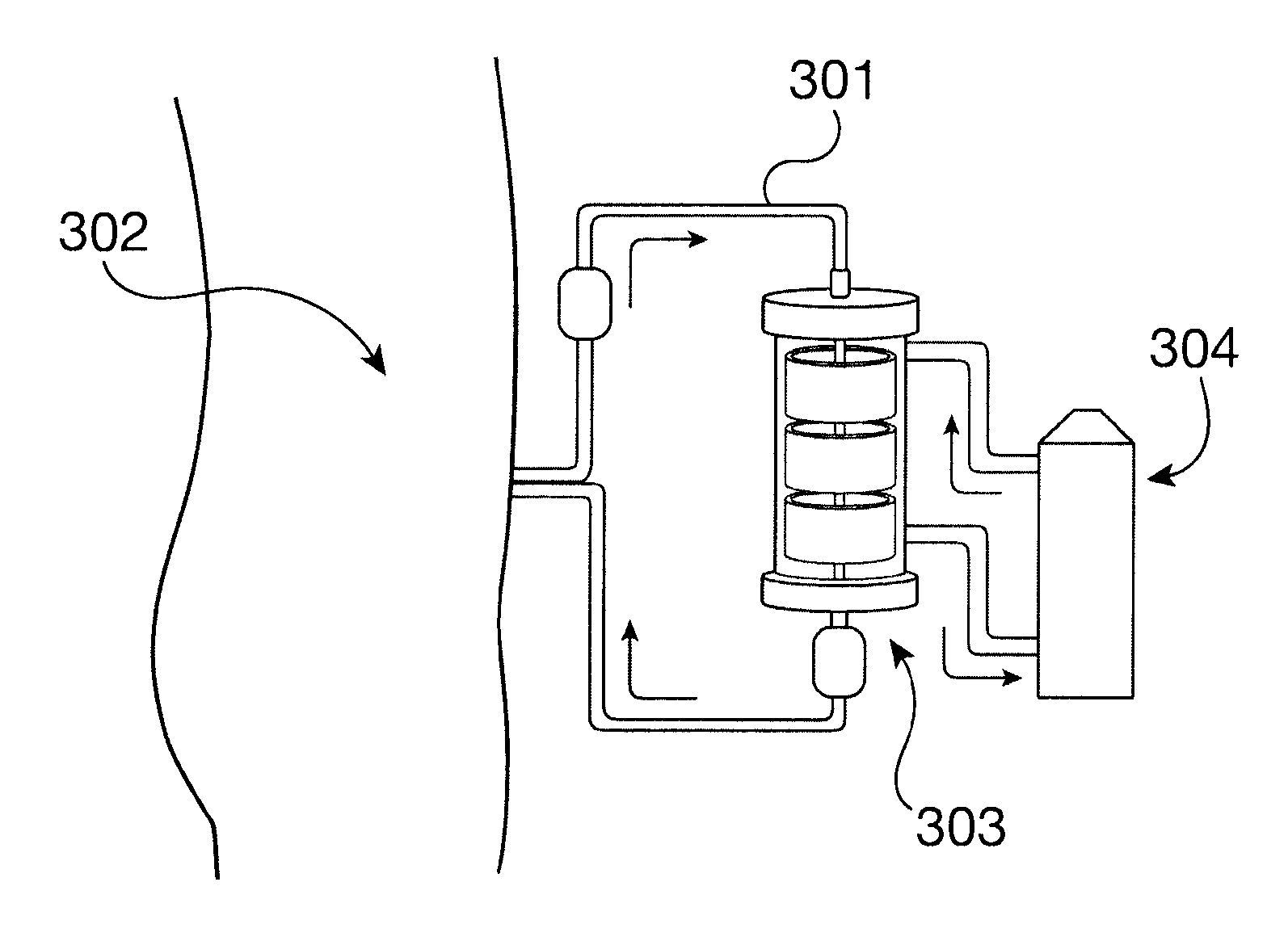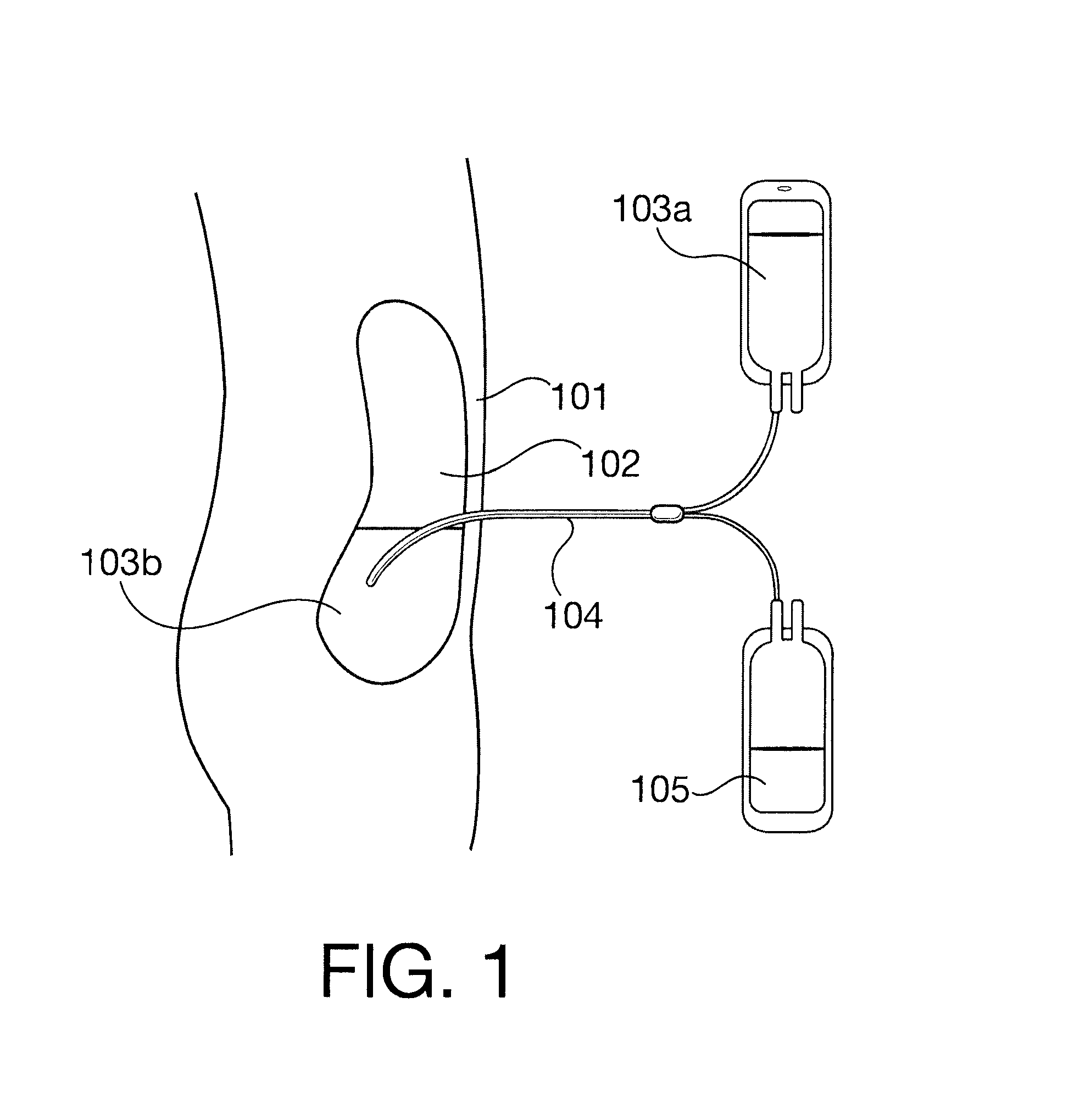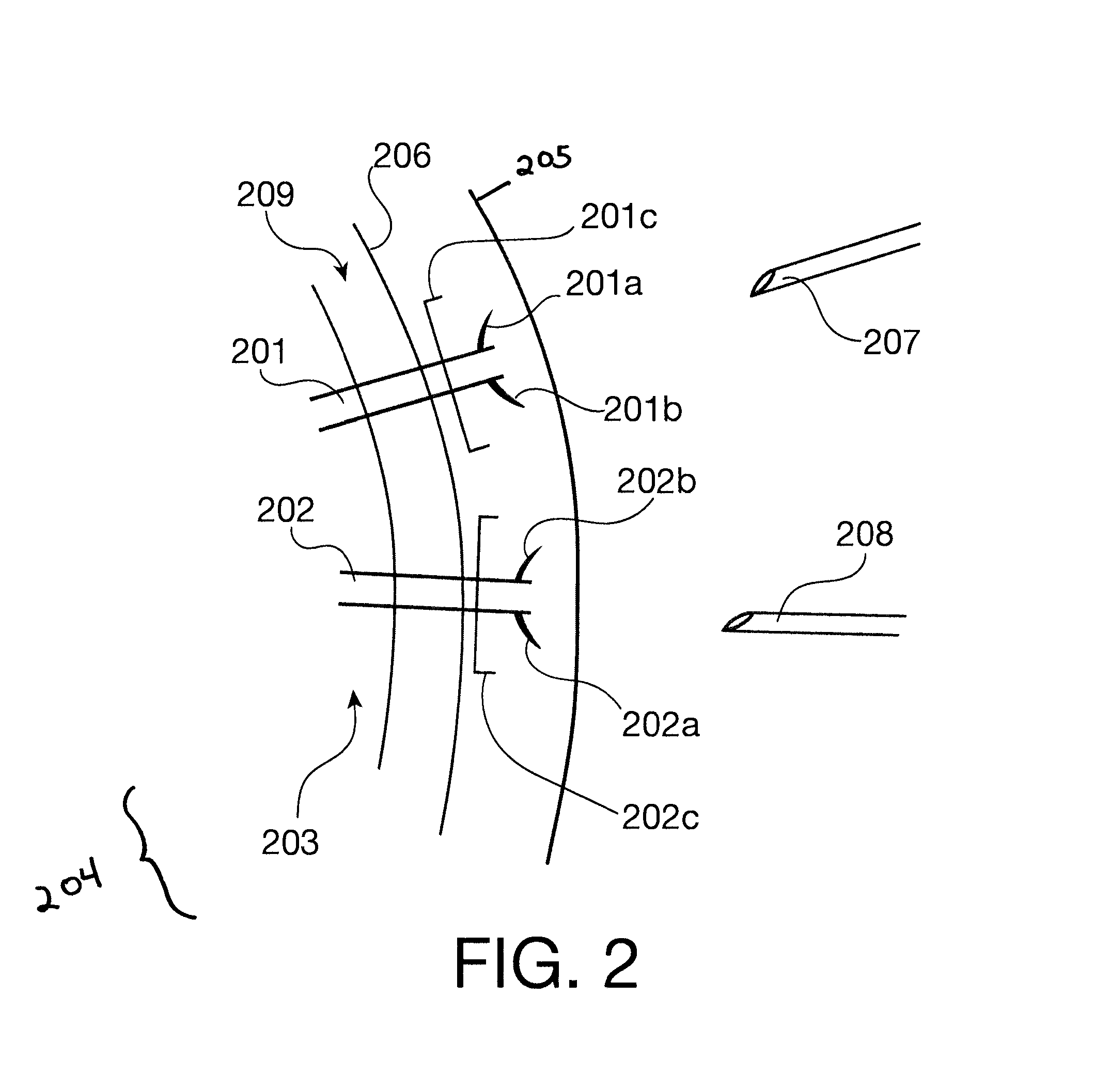System and Method for Administering Peritoneal Dialysis
a technology for peritoneal dialysis and peritoneal dialysis, which is applied in the field of treating patients with dialysis, can solve the problems of restricting the activities of patients, cumbersome peritoneal dialysis, and a difficult process
- Summary
- Abstract
- Description
- Claims
- Application Information
AI Technical Summary
Benefits of technology
Problems solved by technology
Method used
Image
Examples
Embodiment Construction
[0015]Embodiments of the invention relate to a technique for peritoneal dialysis that combines a unique catheter design with an alteration in typical dialysis techniques.
[0016]FIG. 1 is a diagram illustrating current techniques associated with continuous ambulatory peritoneal dialysis. These techniques operate by exchanging fluids and other dissolved substances (such as, e.g., urea, potassium, etc.) from the blood across the patient's peritoneum 101, which acts as a membrane, in the abdomen 102. Typically, systems and methods for peritoneal dialysis rely on surgical insertion of a catheter 104, prior to the commencement of dialysis treatment. After cleaning and any other required pre-treatment verification, a specified volume (commonly referred to as “dwell”) of fresh dialysate fluid 103a is introduced through catheter 104 in the abdomen 102 and flushed out during regular fluid exchanges throughout the day. The administered dialysate fluid 103b remains in the abdomen 102, while the ...
PUM
 Login to View More
Login to View More Abstract
Description
Claims
Application Information
 Login to View More
Login to View More - R&D
- Intellectual Property
- Life Sciences
- Materials
- Tech Scout
- Unparalleled Data Quality
- Higher Quality Content
- 60% Fewer Hallucinations
Browse by: Latest US Patents, China's latest patents, Technical Efficacy Thesaurus, Application Domain, Technology Topic, Popular Technical Reports.
© 2025 PatSnap. All rights reserved.Legal|Privacy policy|Modern Slavery Act Transparency Statement|Sitemap|About US| Contact US: help@patsnap.com



